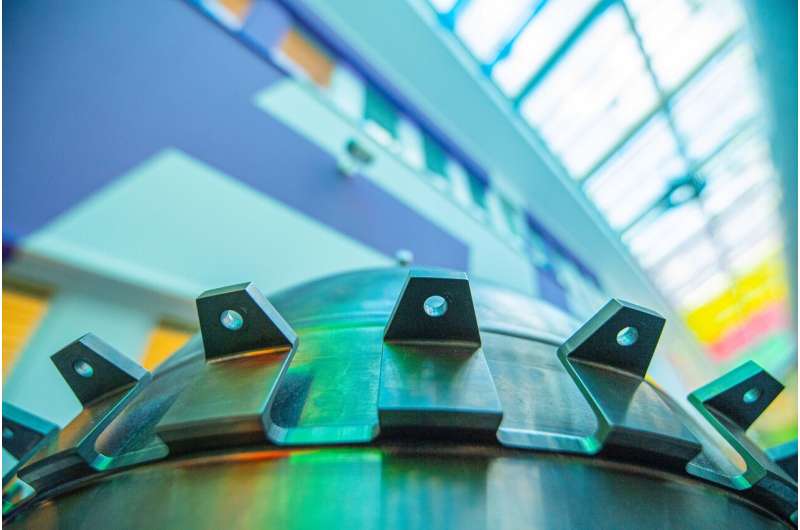Image: Vega's titanium propellant tank

This titanium propellant tank, on show in the laboratory corridor of ESA's technical heart, comes from Europe's Vega launcher—one of four serving its AVUM upper stage.
The 30-m high four-stage Vega is Europe's launcher for smaller satellites. Its topmost "Attitude Vernier Upper Module' hosts Vega's avionics 'brain," overseeing the overall flight of the launcher. Then, once it separates from the third stage, the reigniteable AVUM flies like a spacecraft in its own right to deploy its various payloads into their set orbits, achieving meter-scale precision.
ESA's Materials and Electrical Components Laboratory, based at ESTEC in the Netherlands, played a trouble-shooting role ahead of the first Vega launch back in 2012, after one of these tanks failed to perform adequately during a 'burst test' – involving deliberately overpressurizing it. Following forensic scrutiny the Lab team discovered that weld quality was the culprit.
They produced a full metallurgical analysis of the tank welds, and came up with new protocols to improve their microstructure—the improved tanks withstanding more than twice their intended operating pressures.
The sixteenth Vega flight is due later this month. Flight VV16 will carry an innovative 'rideshare' payload of multiple small satellites and CubeSats.
Provided by European Space Agency





















